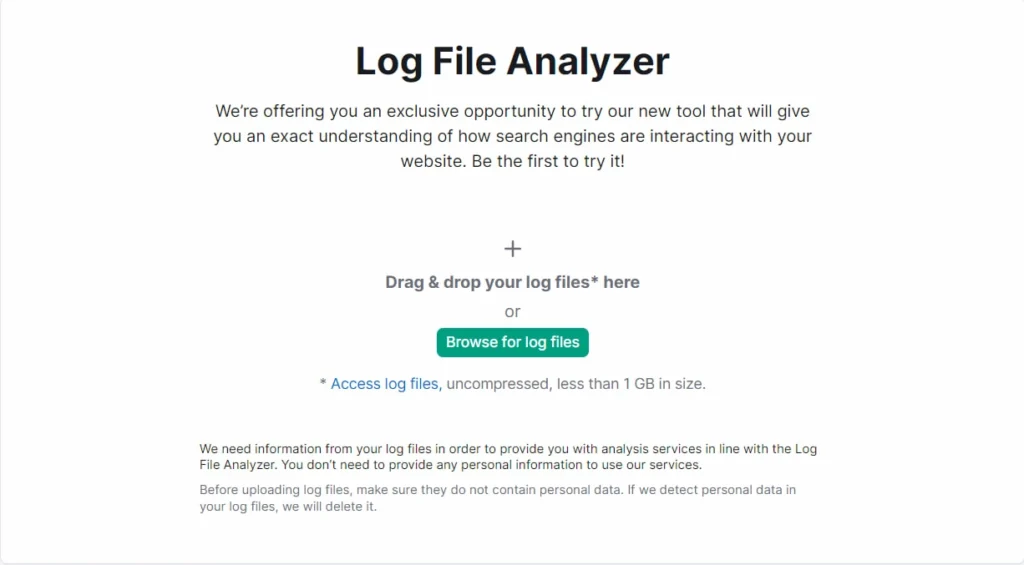Delving into the significance of log file analysis for SEO in 2024 offers a fascinating glimpse into the evolving landscape of search engine optimization. As we navigate through this digital era, understanding the nuances of how search engines interact with our websites is more critical than ever. Log file analysis, a somewhat underappreciated hero in the vast world of SEO, stands out as a pivotal practice for anyone keen on mastering their online presence. So, let’s break down what makes it so indispensable.
What is a Server Log File?
A server log file is essentially a detailed record created by a server, documenting every request made to the server for resources on that server.
This includes requests made by users through browsers, as well as by bots and crawlers, such as those deployed by search engines to index web content. Each entry in a log file is a timestamped record that provides specific pieces of information about the request, including:
- IP Address: The unique address of the visitor or bot that made the request, offering insights into the geographic distribution of your site’s audience or the origin of bots crawling your site.
- User-Agent: This identifies the type of browser or bot that made the request, allowing you to understand which search engines are crawling your site and how users are accessing it.
- Timestamp: The exact date and time when the request was made, providing critical data on when your site is most active or when search engine bots visit.
- Requested URL: The specific page or resource that was requested, highlighting which parts of your site are attracting attention or being ignored.
- Status Code: The server’s response to the request, such as 200 for successful requests, 404 for not found, or 500 for server errors, offering immediate feedback on potential issues with your site.
- Referrer: This indicates the previous web page from which a link was followed, providing context on how visitors or bots navigate through your site.
What Does Log File Analysis Mean?
Firstly, it’s essential to grasp what log file analysis entails. In the simplest terms, every time someone—or something, like a search engine bot—visits a web page, the server generates a log file. This file is a gold mine of data, recording every single request made to the server, including the resource accessed, the time of access, the IP address of the requester, and the status code returned. Analyzing these logs provides a transparent, unfiltered view of how search engines are interacting with your site.
Why Log File Analysis is a Game-Changer for SEO in 2024
- Unveiling Search Engine Crawling Patterns: Understanding how search engine bots crawl your site can unearth insights into potential bottlenecks. Are they spending too much time on irrelevant pages? Are crucial pages being overlooked? Log file analysis for SEO lays bare the reality of your site’s crawlability, allowing for targeted optimizations.
- Spotting Crawl Budget Waste: The concept of a crawl budget refers to the number of pages a search engine bot will crawl on your site within a specific timeframe. Wasting this budget on low-value pages means your more important content might not be indexed as frequently. Through log file analysis, you can identify and rectify these leaks, ensuring search engines spend time where it matters most.
- Enhancing Site Speed and Performance: Slow website loading times not only frustrate human users but can also deter search bots. Logs can help identify slow-loading pages or server errors that could be hampering your site’s performance, allowing you to make necessary adjustments.
- Improving User Experience (UX): By analyzing access patterns and potential error encounters by both users and bots, you can streamline the user experience, indirectly boosting your SEO. A site that’s easy to navigate and free from errors is more likely to rank higher.
- Security Insights: Log files can also reveal security threats, such as repeated failed access attempts or suspicious crawling patterns. Ensuring your site is secure is paramount, not just for user trust but also for search engine rankings.
Steps to Perform Log File Analysis for SEO
1. Access Your Log Files
First things first, you need access to your server’s log files. These files are usually stored on your web server and can be accessed via FTP or a file manager in your hosting control panel. If you’re using a content management system (CMS) like WordPress, there are plugins available that can help you access these logs.
2. Choose the Right Tools
To make sense of the raw data in your log files, you’ll need specialized tools. Some popular options include:
- Screaming Frog Log File Analyser: A user-friendly tool that allows you to upload your log files and provides detailed insights into crawl behavior.
- Splunk: A more advanced tool that offers powerful analysis and visualization capabilities.
- ELK Stack (Elasticsearch, Logstash, Kibana): Ideal for handling large volumes of log data and creating custom dashboards.
3. Filter Search Engine Bots
Once you have your log files and tools ready, filter the data to focus on search engine bots. Look for user agents like “Googlebot,” “Bingbot,” and “YandexBot.” This step helps you concentrate on how search engines interact with your site, rather than regular user traffic.
4. Analyze Crawled Pages
Identify which pages are being crawled the most and the least. Are your high-value pages being crawled frequently? If not, you might need to adjust your internal linking structure or update your sitemap to ensure that important pages are easily accessible to bots.
5. Check HTTP Status Codes
HTTP status codes can tell you a lot about how bots are experiencing your site. Look for:
- 200 (OK): Successful requests.
- 301/302 (Redirects): Check if your redirects are functioning correctly.
- 404 (Not Found): Find and fix broken links.
- 500 (Server Errors): Investigate and resolve server issues.
6. Monitor Crawl Frequency and Patterns
Track how often search engine bots visit your site and any patterns in their behavior. Are there certain times or days when bot activity spikes? Understanding these patterns can help you optimize your site’s performance and ensure it’s always ready for a crawl.
7. Identify Crawl Budget Waste
Crawl budget refers to the number of pages a search engine will crawl on your site during a given time period. Ensure that this budget is being used effectively by identifying and addressing any low-value pages (e.g., thin content, duplicate pages) that are consuming crawl resources.
8. Take Action on Insights
Finally, use the insights gained from your log file analysis to make informed SEO decisions. Update your robots.txt file to manage crawl priorities, improve your site’s internal linking structure, fix any detected errors, and continually monitor bot activity to ensure your SEO strategies are working as intended.
As we look towards the future of search engines in 2024, the importance of log file analysis for SEO cannot be overstated. It offers unparalleled insights into how search engines interact with your site, allowing for precise, data-driven optimizations. In a landscape where every detail counts, understanding and leveraging these interactions will be the key to SEO success. So, whether you’re a seasoned SEO veteran or just starting, embracing log file analysis could very well be your next game-changer.
For those looking to harness the full potential of log file analysis and elevate their SEO strategy, enlisting the help of an SEO expert can make all the difference. Our team of seasoned SEO professionals is equipped with the knowledge and tools to interpret your log files and implement effective strategies tailored to your unique needs. Don’t navigate the complexities of SEO alone—let our experts guide you to higher rankings and greater online visibility. Contact us today to take the first step towards optimizing your site for the future.





